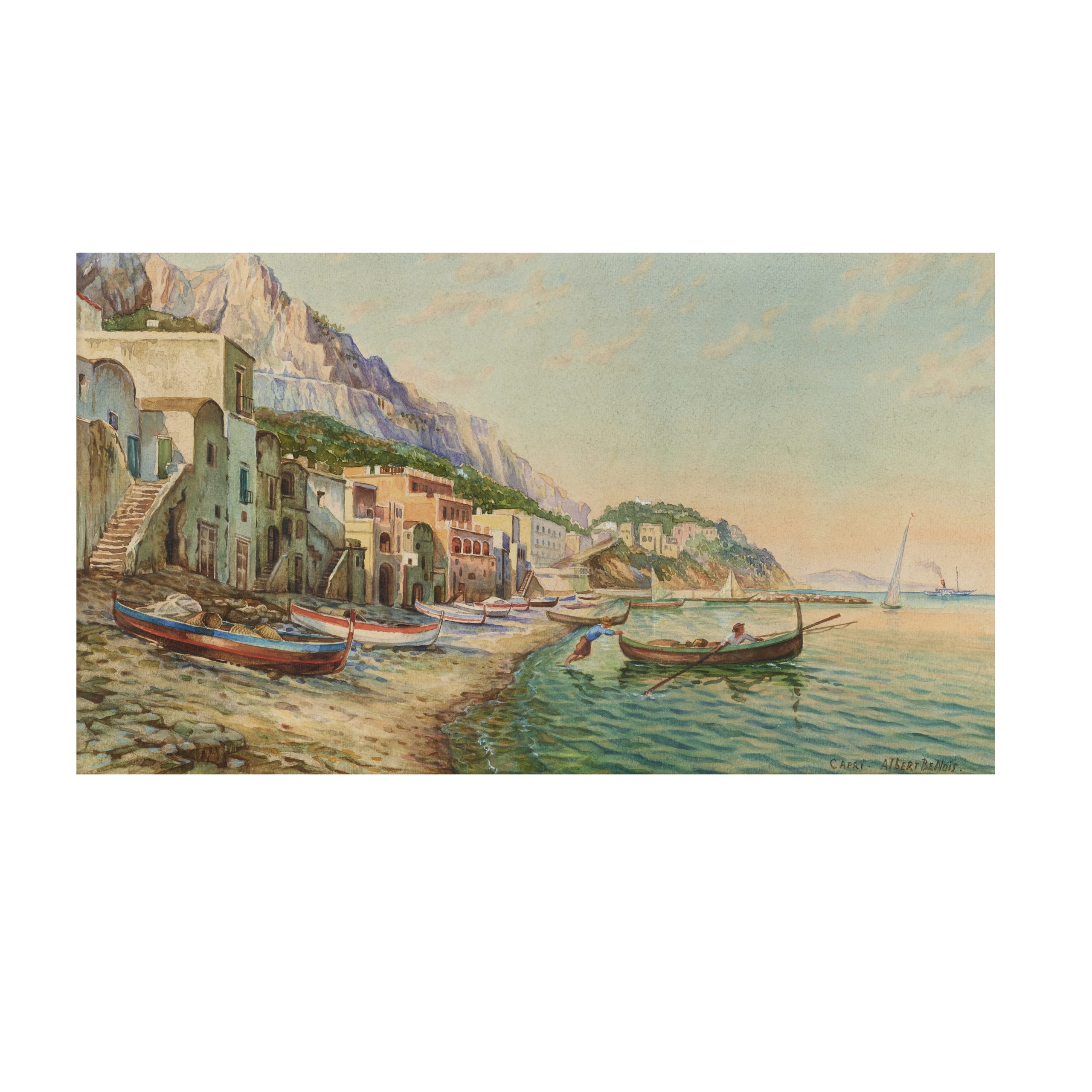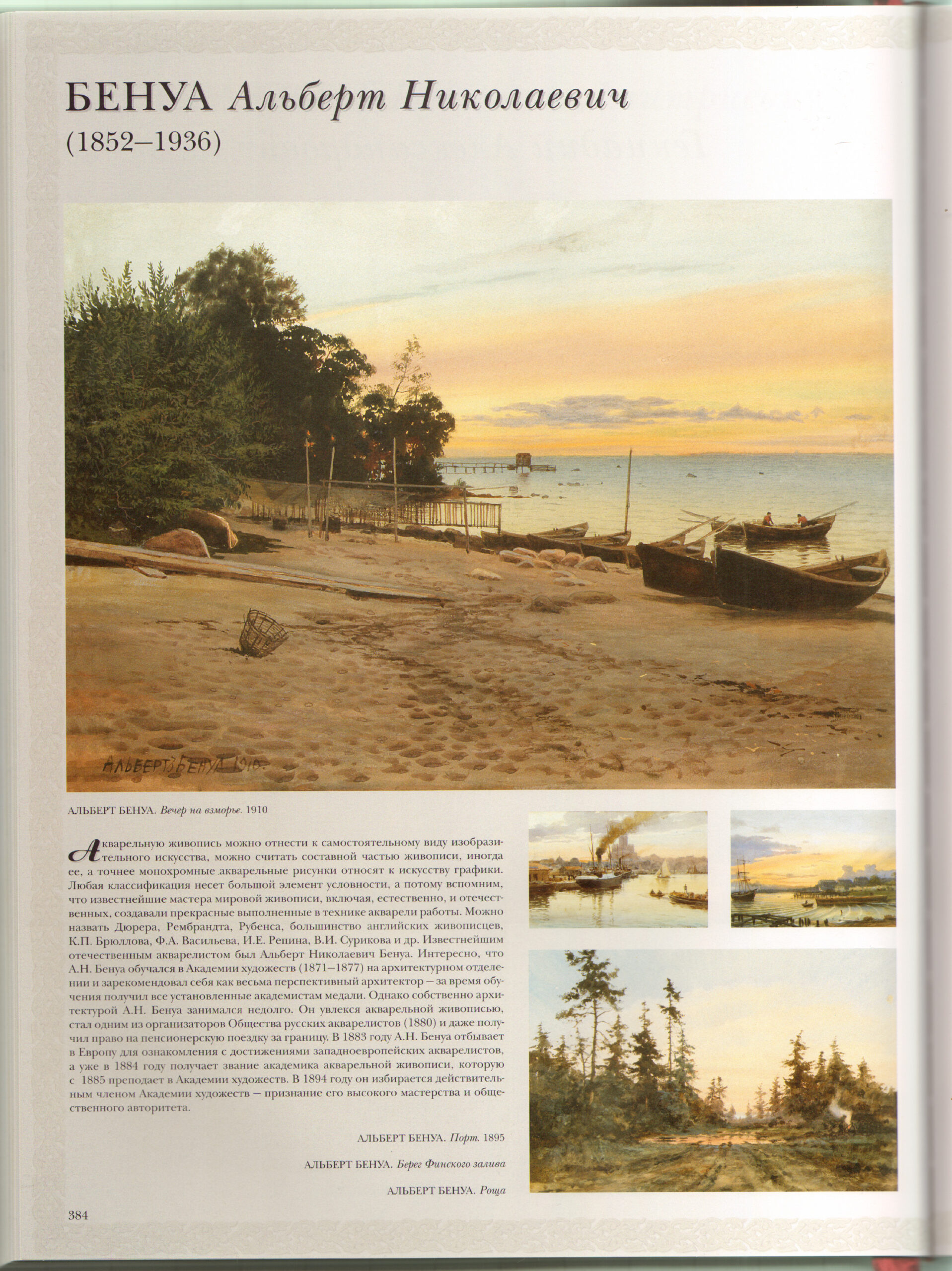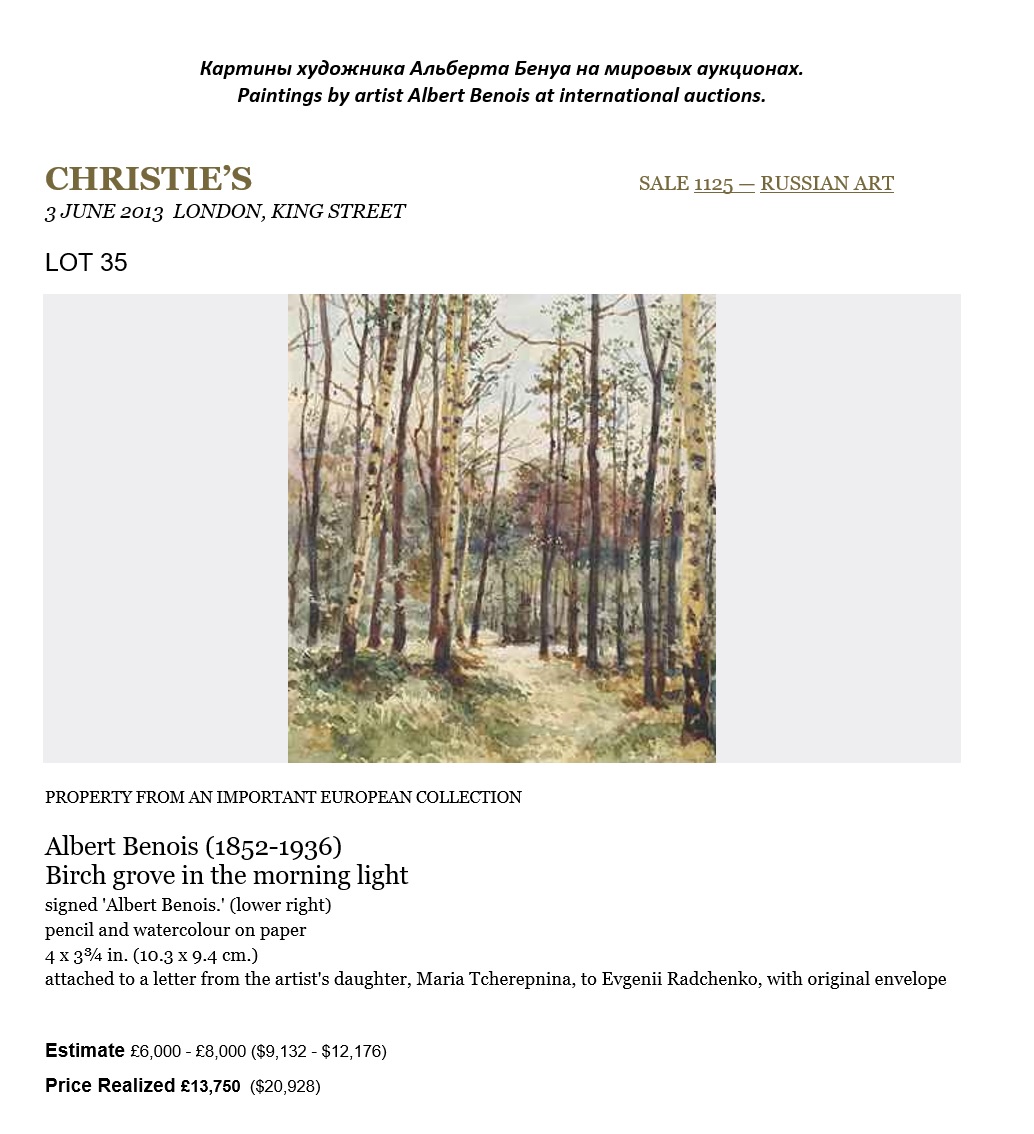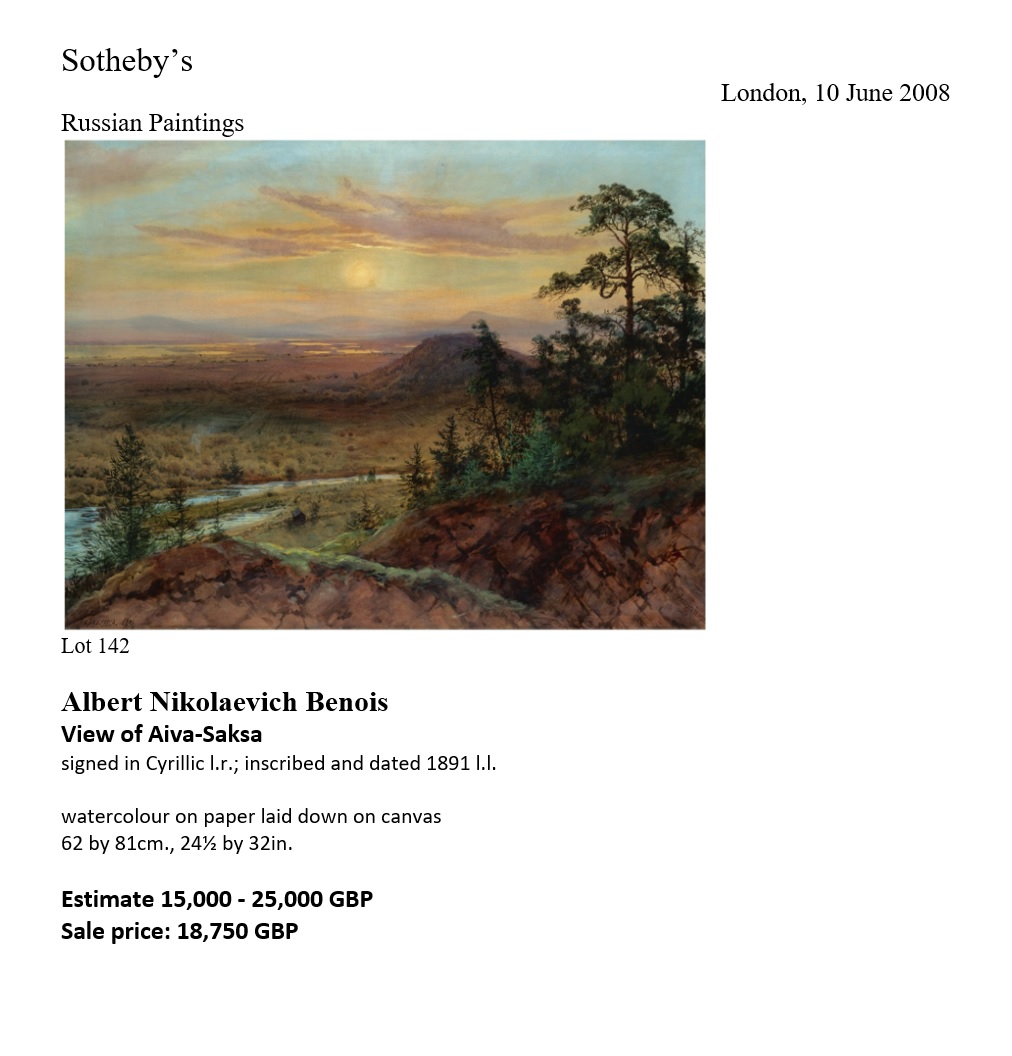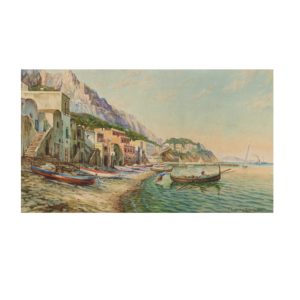BENOIS ALBERT NIKOLAEVICH
March 14, 1852 (St. Petersburg) – May 16, 1936 (Fontenay-aux-Roses, near Paris). Watercolorist and architect.
The eldest son of Academician of Architecture Nikolay Leontyevich Benois, brother of architect Leonty Benois (1856–1928) and artist Alexander Benois. Father of painter Camille Benois (Croatian) (1878–1953) and watercolorist Albert (Alberta-Constantine) Benois (1879–1930).
He was home schooled, had art and music lessons, was an excellent pianist-improviser. After graduating from the 5th St. Petersburg gymnasium, in 1871, he enrolled the architectural department of the Imperial Academy of Arts. At the same time, he studied watercolors technique under the guidance of L. O. Premazzi and K. O. He was influenced by the watercolorist E. S. Villiers de Lisle-Adan. During his studies, he received several silver and two gold medals for watercolors and architectural projects. In 1877, he graduated with the title of artist-architect of the first class degree, for the project „Station in a park near the capital city“. Later he moved away from architecture and devoted himself to watercolor painting. Among the few implemented architectural projects is the dacha of Ts. A. Kavos in Peterhof (1875–1876).
For his success in watercolor painting he was awarded by the Council of the Imperial Academy of Arts with foreign pensioners, during 1884 he visited Italy, Tunisia, Paris and London. Upon his return, he received the title of academician for a series of Italian landscapes. During 1885-1894, he was a teacher of the Imperial Academy of Arts in the class of watercolor painting; in 1893, he was elected a full member of the Imperial Academy of Arts, and in February 1894 a member of the Council of the Imperial Academy of Arts. In 1895 he was appointed curator of the Imperial Museum of Russian Art of Alexander III (Russian Museum), did a great job of systematizing the funds and preparing them for exposition. Since 1897, he was inspector for the artistic part of the Department of Trade and Manufactory (later the Ministry of Trade and Industry).
In the 1880s-1910s, on numerous trips, he painted landscapes of the coast of the Gulf of Finland, the Caucasus, Crimea, the Volga region, North Africa, the Mediterranean, Siberia, Manchuria, China, Japan and Korea, Venice, Palermo, Paris, London, Cairo, Constantinople, Capri, Samarkand and Bukhara. He painted a large series of St. Petersburg and its suburbs views. He accompanied, more than once, Emperor Alexander III on a yacht summer trips through the Finnish skerries (1887, 1888, 1890, 1894).
He participated in most of the St. Petersburg watercolor and architectural exhibitions, which, thanks to his efforts, have become a noticeable phenomenon in Russian artistic life. He exhibited many times abroad. Since 1880 he was a member of the Circle of Russian watercolorists, in 1887 he became a founding member and head of the Society of Russian watercolorists, and since 1897 – honorary member. “Watercolor Fridays” of this society for many years were held in his apartment on Nikolskaya Street 15 (now Glinka Street).
He held personal exhibitions in St. Petersburg (1903, 1909 и 1915) and Kyiv (1904, 1909). The exhibition catalogs were published in the form of color albums. The paintings were reproduced in the capital’s magazines.
In 1918, he was appointed head of the Museum of Applied Art of the Commissariat of Trade and Industry. He participated in the creation of the Museum of Nature in the former castle of Count Stenbock-Fermor in Lakhta. In 1920, he took part in the northern expedition of the Petrograd Geological Institute, painted landscapes – the coast of the Barents Sea and Novaya Zemlya. In 1921, at the Dom Iskusstv, he held an exhibition of watercolors (76 works) painted during the expedition. He also participated in the first State opened exhibition of Works of Art (Petrograd, 1919) and other Soviet exhibitions.
In 1924, at the call of his eldest daughter, opera singer Maria Tcherepnina (1876–1958), he left for Paris. In 1926, he was elected a member of the Paris Academy of Arts. During 1928–1930, he held three personal exhibitions in galleries G. Petit and V. Girchman. Participated in exhibitions of Russian artists in Paris (V. Girchman, July 1929, Salle Yteb, 1932; La Renaissance, 1932), Brussels (1928) and Belgrade (1930), his works were exhibited at exhibition of „The Wanderers“in Harbin (1920-е). He donated his paintings for charitable lotteries in favor of Russian students who were studing abroad (1928) and at the traditional press ball at the Lutétia Hotel „Lutétia“(1930).
In his last years, he suffered a disease and was bedridden, under the care of his daughter and son-in-law, the composer N.N Cherepnin. He died in a nursing home and was burried in the cemetery at Issi de Mulino. His paintings are presented in Sate Russian Museum, the State Tretyakov Gallery and many other museums in Russia.
